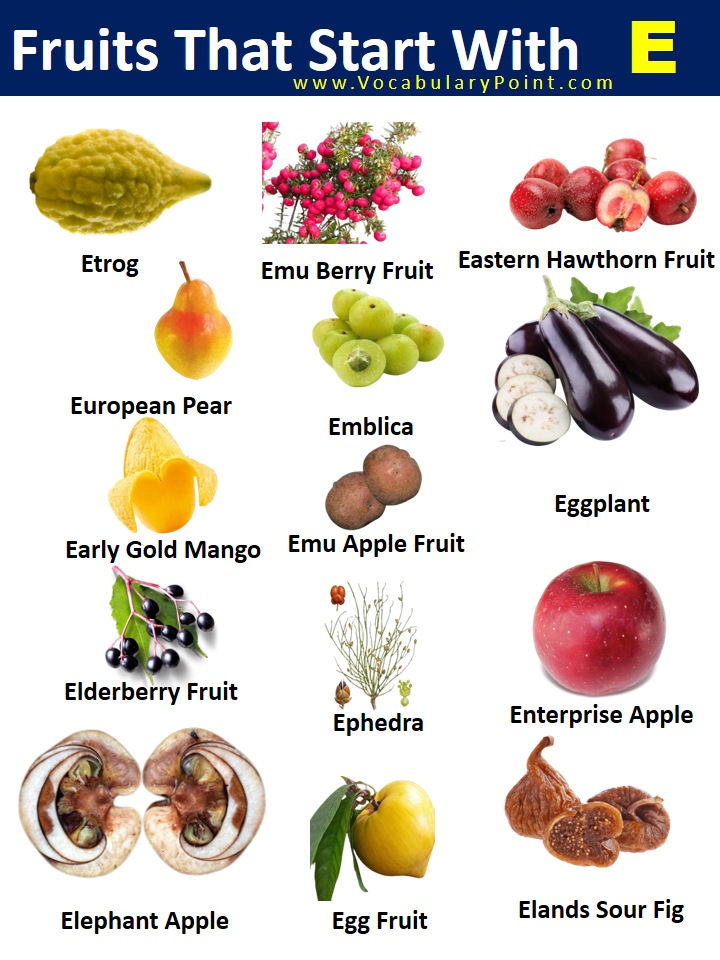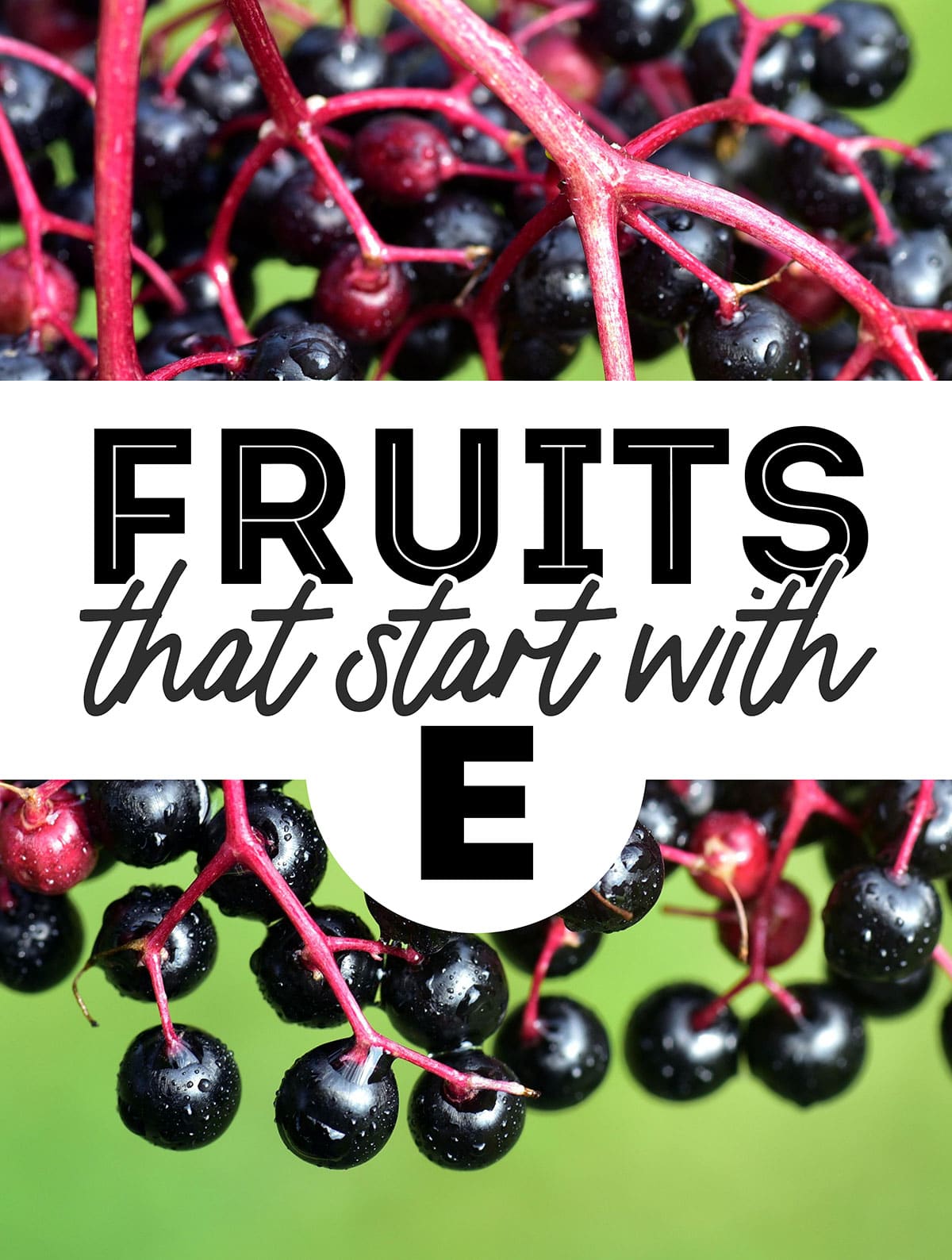Are you ready to embark on a journey into the world of fruits, a world brimming with vibrant colors, tantalizing flavors, and hidden nutritional treasures? Prepare to be amazed by the sheer diversity and the often-overlooked bounty that begins with the letter "E"!
From the familiar to the utterly exotic, the "E" fruits offer a fascinating glimpse into global culinary traditions, health benefits, and botanical wonders. We often take for granted the fruits we readily consume, yet a whole universe of delicious and beneficial options lies beyond the usual suspects. This exploration will unveil an array of "E" fruits, detailing their origins, characteristics, flavor profiles, and practical uses. Get ready to expand your fruit horizons and discover new favorites!
Let's delve into the world of "E" fruits! We'll uncover a wide variety, starting with some familiar options and moving on to more exotic finds. These fruits offer a spectrum of flavors, textures, and nutritional benefits, proving that nature's candy is as diverse as it is delicious.
- Trending Qarxis Somali Wasmo Telegram Channels Join Now
- Find Movies Online Netflix Zee5 More Stream Now
Heres a glimpse into some of the incredible fruits we will explore, each with its unique story and contributions to our well-being. Prepare to be captivated!
| Fruit Name | Origin & Common Regions | Flavor Profile | Key Nutritional Benefits |
|---|---|---|---|
| Elderberry | Europe, North America | Tart, slightly sweet | Rich in antioxidants, immune support |
| European Pear | Europe, Asia | Sweet, juicy, varies by variety | Fiber, vitamins C and K |
| Escarlate Grape | California, USA | Sweet, crisp | Antioxidants, vitamins |
| Elephant Apple | Southeast Asia | Sour, tart | Vitamin C, fiber |
| Etrog | Mediterranean, Middle East | Citrusy, aromatic | Vitamin C |
| Entawak | Southeast Asia | Sweet, slightly tangy | Vitamins and minerals |
| Emu Apple | Australia | Sweet and tangy, with a slight cinnamon note | Vitamin C, Antioxidants |
The list above represents only a small fraction of the "E" fruits available. From the common to the exotic, each fruit offers a unique taste experience and a host of health benefits. Lets dive in and explore these fruits in greater detail!
Elderberry
- Uncensored Anya Matusevich More Exclusive Content 2024
- Cubbi Thompson Age Bio More Latest News Updates
Elderberries are small, dark purple berries that have been used for centuries in traditional medicine, especially in Europe and North America. These tart berries are packed with antioxidants and vitamins, especially Vitamin C, making them a popular remedy for colds and flu. Elderberries are often used in jams, syrups, wines, and even baked goods. When consumed raw, elderberries can be toxic, so they must be cooked before consumption. They are a potent source of antioxidants, contributing to overall health and immune support.
European Pear
European pears, with their sweet and juicy flesh, are a beloved fruit worldwide, originating from Europe and Asia. The flavor of a European pear varies greatly by variety, from the crisp sweetness of a Bartlett to the buttery texture of a Bosc. Pears are a good source of fiber, vitamins C and K, and various antioxidants. They are a versatile fruit enjoyed fresh, in salads, or cooked in pies and tarts. The different varieties offer a range of textures and flavors, ensuring that there is a pear for every palate and culinary application.
Escarlate Grape
Escarlate grapes, a crisp and refreshing variety, are a modern favorite, originating from California, USA. These seedless grapes are known for their sweet flavor and firm texture, making them a delightful snack. Escarlate grapes are packed with antioxidants and vitamins, contributing to overall health and wellness. They are generally consumed fresh but can also be used in salads or as a topping for desserts. Their delightful sweetness and crispness make them a crowd-pleaser during their season.
Elephant Apple
Elephant apples are native to Southeast Asia. These large, sour fruits are often used in curries, jams, and chutneys. Their tartness is a defining characteristic, making them a popular ingredient in savory dishes. Elephant apples are a good source of Vitamin C and fiber. They are often enjoyed in local cuisine in the regions where they grow. Though less widely known, the elephant apple contributes a unique sour flavor to culinary traditions in Southeast Asia.
Etrog
The etrog is a citrus fruit similar to a citron, with a unique, aromatic flavor profile, originating in the Mediterranean and Middle East. It is often used in religious ceremonies and is notable for its thick rind, which is high in essential oils. The etrog has a distinct citrusy aroma and is often candied or used in preserves. It is known for its Vitamin C content and is prized for its use in Jewish tradition. The etrogs unique flavor and aroma add to its appeal and cultural importance.
Entawak
Entawak, also known as the durian, is a controversial fruit with a pungent smell and a sweet, custard-like flavor, native to Southeast Asia. Despite its strong odor, it is loved by many for its rich taste and creamy texture. Entawak is a good source of vitamins and minerals. It is often consumed fresh or used in desserts and savory dishes. The durians polarizing nature makes it a fascinating fruit, and its fans swear by its complex flavor profile.
Emu Apple
The emu apple ( Kunzea pomifera) is a native Australian fruit. This fruit offers a unique taste, being sweet and tangy with a hint of cinnamon, and is relatively unknown outside its native range. Emu apples are a good source of Vitamin C and antioxidants. It can be enjoyed fresh, but they are also used in jams, sauces, and desserts. The emu apple offers a taste of Australia and is making its way into the culinary world.
In addition to the fruits mentioned above, many other fruits start with the letter "e," each with its unique characteristics and benefits. The world of fruits is vast and diverse, offering something for every palate. Eating a varied selection of fruits not only provides essential nutrients but also adds excitement and flavor to your diet.
Storage Tips:
- Elderberries: Store in the freezer or make them into jam or syrup.
- Pears: Store at room temperature until ripe, then refrigerate.
- Grapes: Store in the refrigerator.
- Elephant Apples: Refrigerate.
- Etrog: Store at room temperature.
- Entawak (Durian): Consume soon after ripening; store in the refrigerator if necessary.
- Emu Apple: Store in the refrigerator.
Nutritional Value:
The nutritional value of fruits beginning with "E" varies greatly. Generally, fruits are packed with vitamins, minerals, and antioxidants that contribute to overall health. They are also often high in fiber, which aids in digestion. Consuming these fruits as part of a balanced diet provides a range of benefits.
Culinary Uses:
The culinary uses for "E" fruits are as diverse as the fruits themselves. Elderberries can be turned into syrups, jams, and baked goods. European pears can be enjoyed fresh, in salads, or baked in pies. Escarlate grapes are excellent for snacking and also add a great addition to salads and desserts. Elephant apples and entawak often star in savory dishes, while etrogs are used in preserves. Emu apples can be enjoyed fresh, or used in jams, sauces, and desserts. The culinary versatility of these fruits means theres an endless opportunity to experience new and exciting flavors.
Allergies and Sensitivities:
Always be aware of potential allergies and sensitivities. Those with allergies to certain fruits should exercise caution when trying new options. Consult with a healthcare professional or allergist if you have any concerns.
Benefits for the Planet:
Choosing a varied selection of fruits can also have a positive impact on the planet. Supporting local growers and selecting fruits grown in sustainable ways helps reduce our carbon footprint and promotes biodiversity. Eating fruits in season is another way to minimize your impact. When you choose to explore the fruits that begin with "E" youre not only expanding your palate but also contributing to a healthier planet.
Exploring the world of fruits starting with "E" is a great way to enhance your diet and discover new flavors. From familiar favorites to exciting exotic finds, theres always something new to try. Embrace the diversity and enjoy the wonderful variety that these fruits have to offer!


